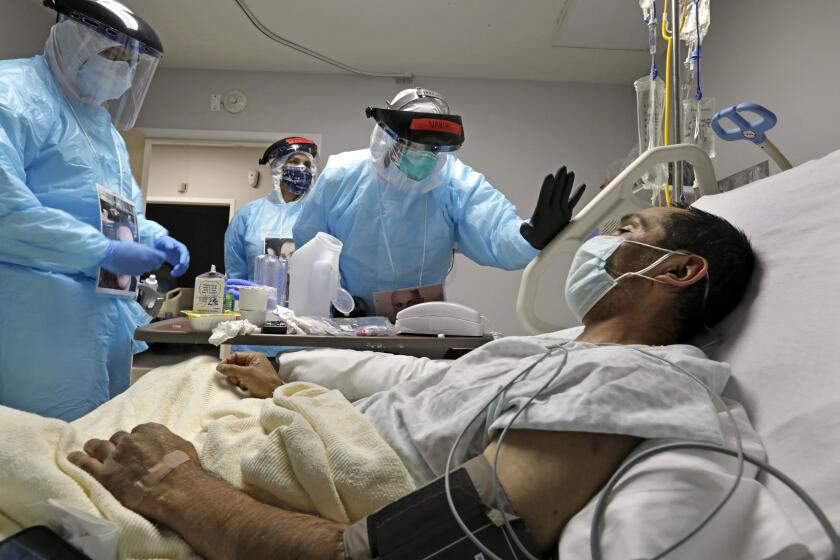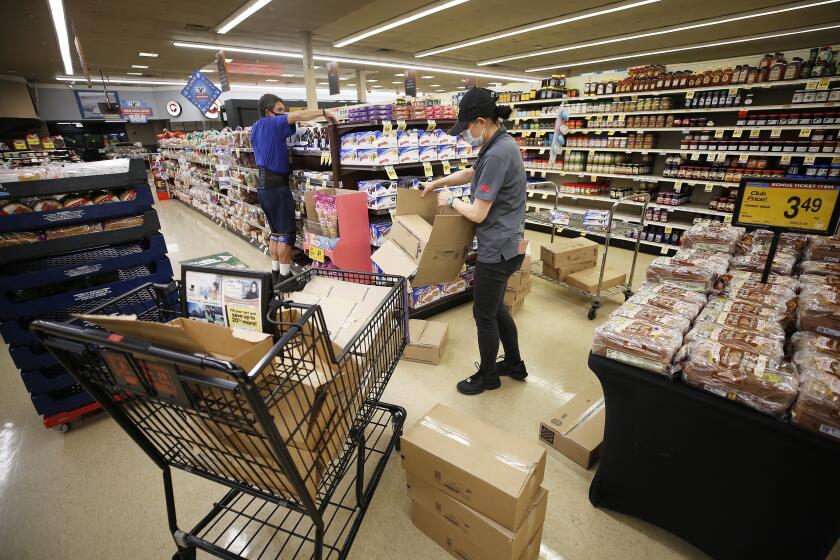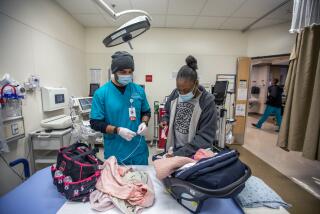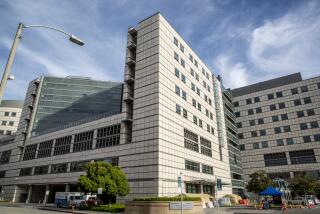Behind the story: How we reported from a COVID-19 unit
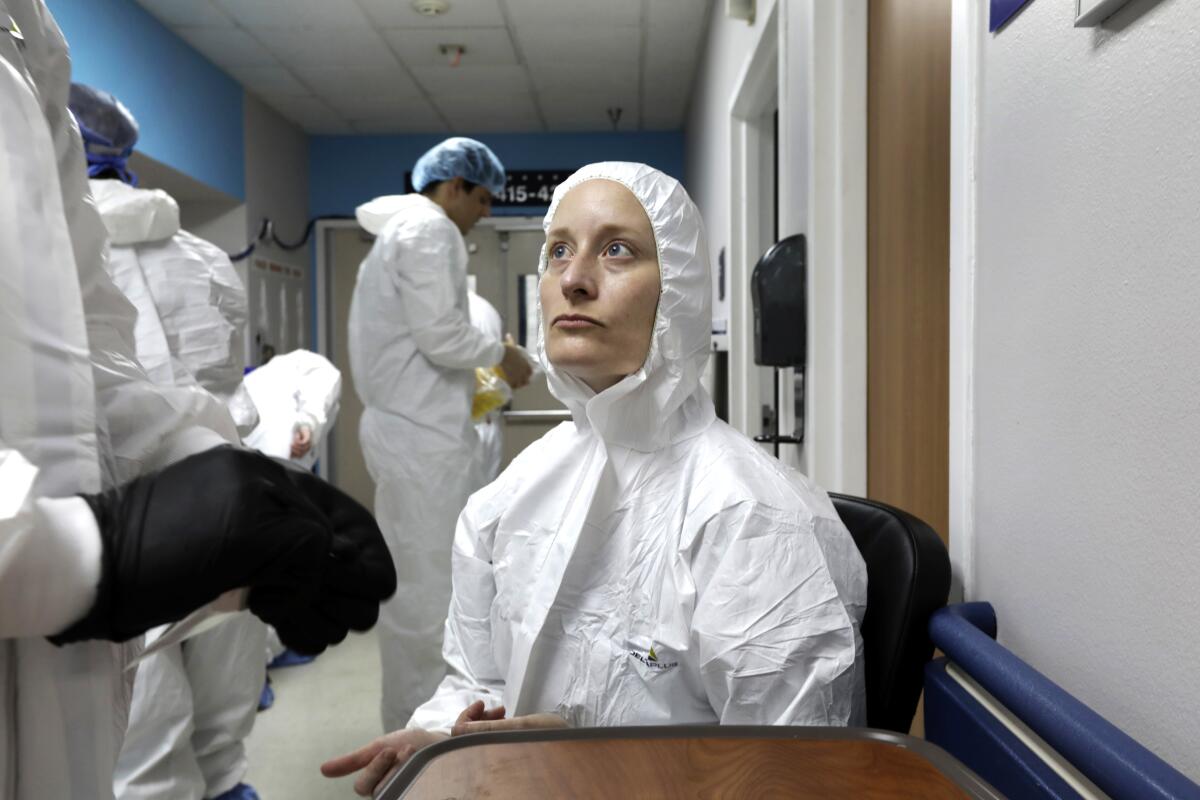
We set out to cover a COVID-19 unit the same way we have reported from war zones: by planning our entry and exit strategy.
Before I even entered United Memorial Medical Center with Times photographer Carolyn Cole to report this Column One, we discussed with Dr. Joseph Varon what type of protective equipment we would need. Then we offered to supply it ourselves. The L.A. Times had already trained us and provided protective masks, disposable coveralls made of Tyvek, gloves and shoe covers.
But Varon said the Houston hospital had enough protective gear to outfit us. And he preferred we use their N95 masks and other equipment. His only stipulation was that we bring in and take out as little as possible from the unit, pretty much just cameras and a notebook. We agreed.
At the doctor’s urging, before we arrived in the morning to spend the first of two days at the hospital, we shed our watches and other jewelry. We left our phones in our cars. We brought disposable bags to carry our few belongings. In them were extra shoes so we could bag the pairs we wore in the COVID unit before we returned home.
We arrived to find more than a dozen cars lined up outside the hospital for free drive-through COVID-19 testing, a grim reminder of the pandemic. We had to knock on the hospital’s normally automatic double doors and have a nurse buzz us in. Varon met us with medical student Alan Araiza, who lead us to the first of several tent-like zippered plastic entrances.
Araiza took our pictures, which would hang over our protective suits so patients could see what we looked like under all the protective gear. Varon gave us papery disposable scrubs and directed us to the first of several sealed chambers. There we each changed and left our street clothes bagged for our return.
A Houston hospital isn’t just battling the coronavirus. It faces patients who, convinced they’re not infected, leave before treatment is finished.
Varon met us in the final chamber before the COVID unit’s nurses station. There we all pulled on white Tyvek suits, gloves, shoe covers and surgical masks. Once inside, we were greeted by a half-dozen nurses and medical students gearing up to venture into the unit’s main hallway, where eight patients were awaiting morning rounds.
Before we joined them, Varon explained, he needed to make sure we didn’t have COVID.
One of the medical students pricked my pointer finger, then Carolyn’s. He added a drop of each of our blood to a boxy white rapid test kit. Lines on the test kit window would show if we either had COVID or had antibodies from having had the virus.
Carolyn tested negative, just as she had previously. But I had never been tested. I worried that after weeks covering the pandemic I might be positive. We watched the line appear on my test: I, too, was negative.
We could proceed on morning rounds, once we garbed up.
Nurses helped us pull plastic gowns over our Tyvek suits. We added extra shoe covers, gloves, N95 masks and face shields that fogged when we breathed. We received our photos, laminated and strung on ribbons, to hang around our necks.
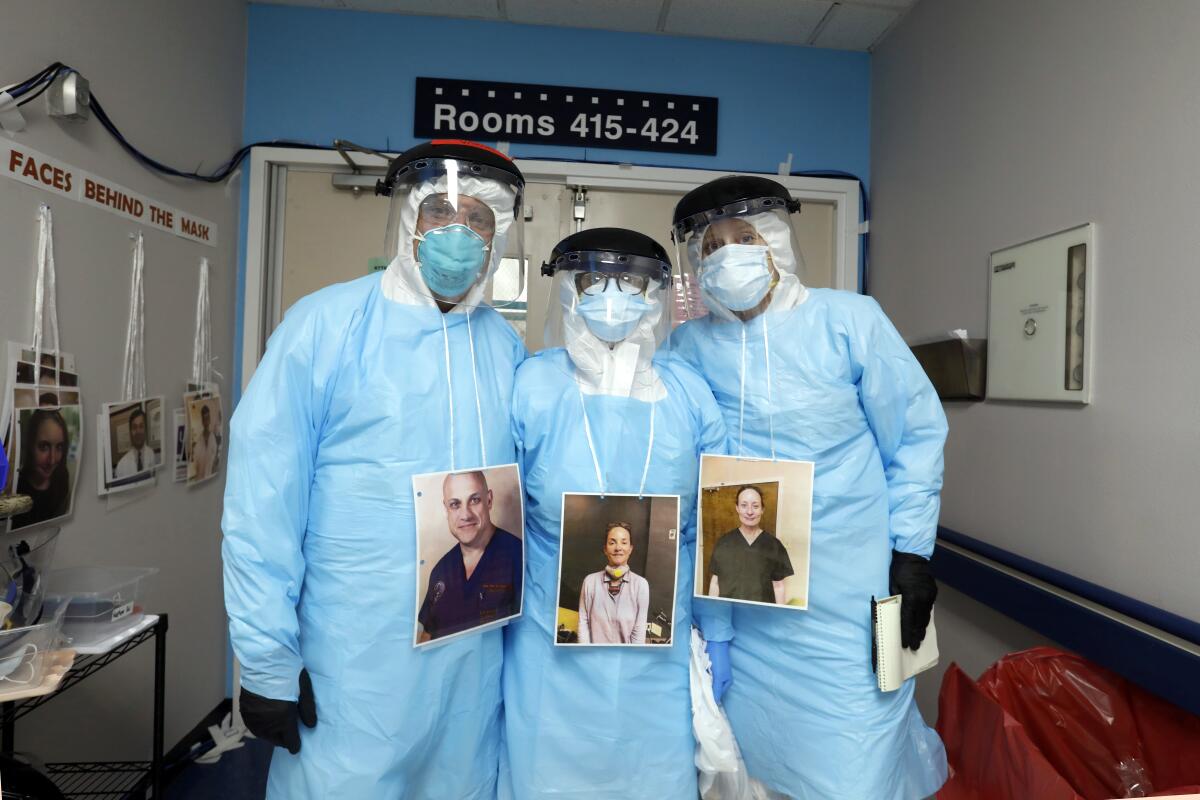
The outfit felt as hot and confining as a scuba suit. Varon and his medical team wore even more gloves and masks than we did since they would be touching and examining patients.
One at a time, we unzipped the chamber at the entrance of the COVID unit and entered. The first thing I saw in the hall was a machine that looked like an air conditioner pumping air through ducts out of the unit to maintain its negative pressure, isolating the airborne virus.
At first, I struggled to hear what Varon and other members of his team were saying, their voices muffled by masks and face shields. Each time I leaned in to hear them or a patient, I worried I was getting too close.
Unlike in other COVID wards I had spoken to doctors and nurses about, the patients here were not on ventilators — they could talk to us from behind their surgical masks. I spoke to each patient we visited, identifying myself, asking about themselves and their care. A couple declined to talk or be photographed. But most wanted to tell us how they were feeling and what they thought of the hospital. All were eager to return home.
We entered the unit twice that first day: first for morning rounds, then for the afternoon admission of a COVID patient from the emergency room. We would return a second day to see the late shift. Each time we followed the same entry and exit procedures, with one exception.
The first time we left the unit, entered the nurses station and began to strip off our outer layer of gear, I mistakenly threw my N95 mask in a hazmat bin. Because Varon had told us not to worry about protective gear, I thought they wanted me to discard the mask, too. But N95 masks are precious. Araiza gave me another one, but cautioned that I should save it. He handed me a permanent marker so I could write my name on it.
For the last few months, grocery stores have served as public theaters for the traumatized American consumer.
I wore that mask for the rest of the day.
From the nurses station, we entered a room where we shed our paper scrubs and set aside our shoes to take a shower with antibacterial soap before reclaiming our street clothes and masks. At our cars, we bagged our shoes and anything else we had taken into the hospital.
Once I got home, I would enter the laundry room and follow the same routine I had when covering churches or other sites where I may have been exposed to the virus: I would bag my shoes, load my clothes into the washer and shower again.
But as I drove home from the hospital at dusk, I wasn’t thinking about cleaning up. I was distracted by the sight of so many Texans doing the exact opposite of what I had spent the day doing.
Texas had lifted restrictions on parks and businesses. After a day spent paranoid about protective gear and social distancing, it was surreal to see scores of people of all ages crowded together on trails and restaurant patios. Almost none wore masks.
More to Read
Start your day right
Sign up for Essential California for news, features and recommendations from the L.A. Times and beyond in your inbox six days a week.
You may occasionally receive promotional content from the Los Angeles Times.

